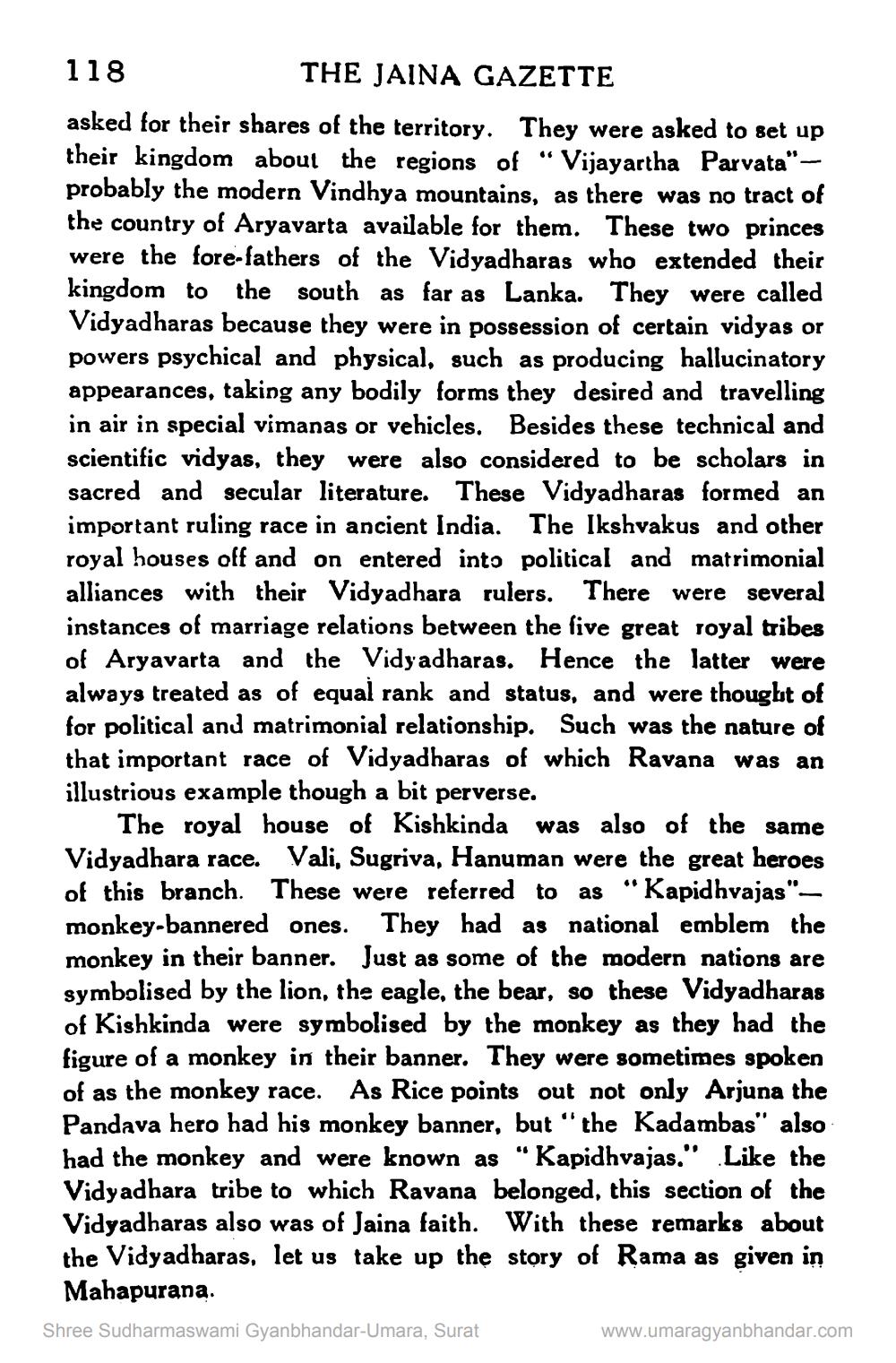________________
118
THE JAINA GAZETTE asked for their shares of the territory. They were asked to set up their kingdom about the regions of " Vijayartha Parvata" — probably the modern Vindhya mountains, as there was no tract of the country of Aryavarta available for them. These two princes were the fore-fathers of the Vidyadharas who extended their kingdom to the south as far as Lanka. They were called Vidyadharas because they were in possession of certain vidyas or powers psychical and physical, such as producing hallucinatory appearances, taking any bodily forms they desired and travelling in air in special vimanas or vehicles. Besides these technical and scientific vidyas, they were also considered to be scholars in sacred and secular literature. These Vidyadharas formed an important ruling race in ancient India. The Ikshvakus and other royal houses off and on entered into political and matrimonial alliances with their Vidyadhara rulers. There were several instances of marriage relations between the five great royal tribes of Aryavarta and the Vidyadharas. Hence the latter were always treated as of equal rank and status, and were thought of for political and matrimonial relationship. Such was the nature of that important race of Vidyadharas of which Ravana was an illustrious example though a bit perverse.
The royal house of Kishkinda was also of the same Vidyadhara race. Vali, Sugriva, Hanuman were the great heroes of this branch. These were referred to as "Kapidhvajas" - monkey-bannered ones. They had as national emblem the monkey in their banner. Just as some of the modern nations are symbolised by the lion, the eagle, the bear, so these Vidyadharas of Kishkinda were symbolised by the monkey as they had the figure of a monkey in their banner. They were sometimes spoken of as the monkey race. As Rice points out not only Arjuna the Pandava hero had his monkey banner, but "the Kadambas" also had the monkey and were known as “Kapidhvajas." Like the Vidyadhara tribe to which Ravana belonged, this section of the Vidyadharas also was of Jaina faith. With these remarks about the Vidyadharas, let us take up the story of Rama as given in Mahapurana. Shree Sudharmaswami Gyanbhandar-Umara, Surat
www.umaragyanbhandar.com




